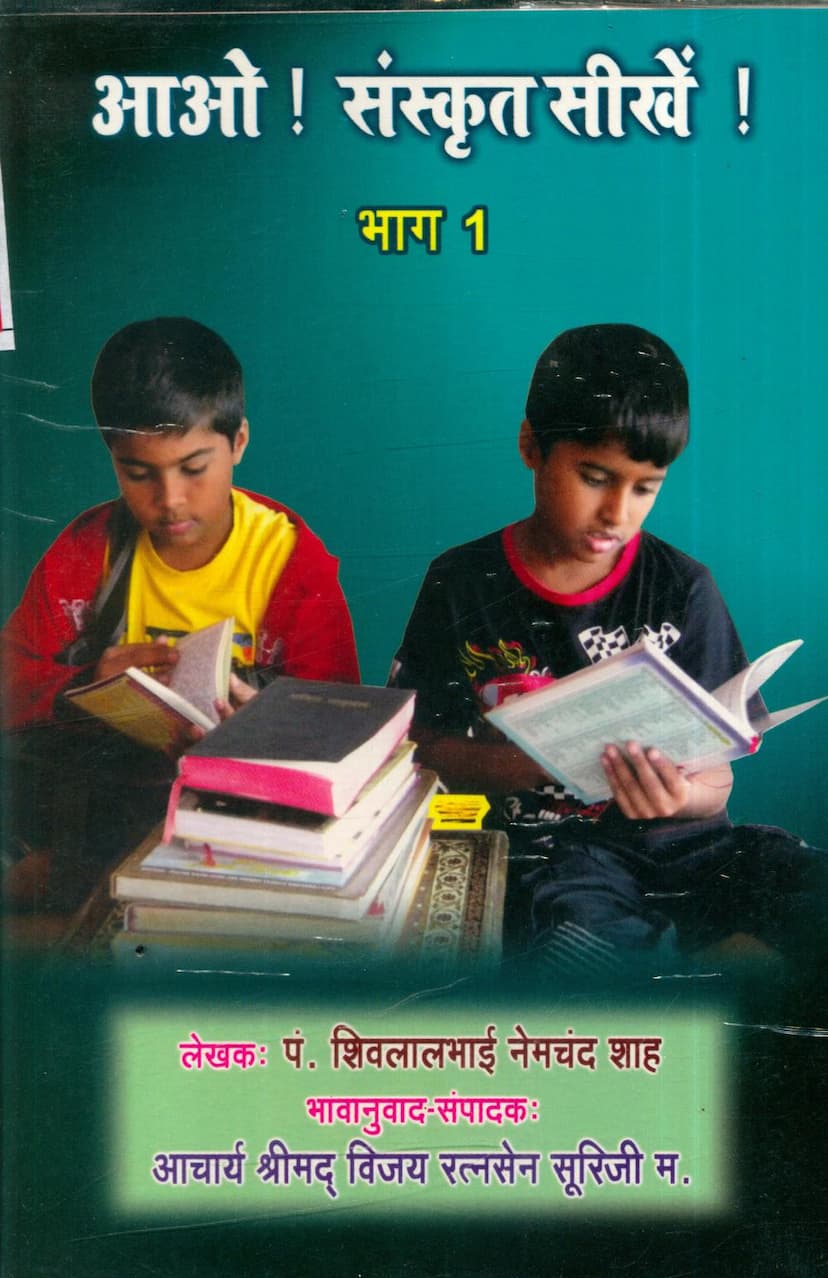Aao Sanskrit Sikhe Part 01
Added to library: September 1, 2025

Summary
"Aao Sanskrit Seekhe Part 01" (Let's Learn Sanskrit Part 01) is a foundational book designed to teach the Sanskrit language. Authored by Pandit Shivlal Nemchand Shah and with a Hindi translation and editing by Acharya Shrimad Vijay Ratnasensuri, the book is published by Divya Sandesh Prakashan.
The book aims to make Sanskrit accessible to Hindi-speaking individuals, particularly those interested in understanding Jain scriptures and philosophy, which are largely written in Sanskrit and Prakrit. The publisher emphasizes the declining state of Sanskrit learning in the present era and highlights the book's role in reviving interest and knowledge in this ancient and sacred language.
The text is structured as a series of lessons, covering essential aspects of Sanskrit grammar and vocabulary. The content includes:
- Varna Parichay (वर्ण-परिचय): Introduction to the Sanskrit alphabet, including vowels (swar), consonants (vyanjan), their pronunciation, and combinations.
- Sandhi Niyam (सन्धि-नियम): Rules of sandhi (joining of letters or words) which are crucial for understanding Sanskrit word formation.
- Shabd Bhed (शब्दों के भेद): Classification of words into different categories like noun (Naam), verb (Dhatu), etc.
- Vibhakti (विभक्ति): Detailed explanation of noun declensions through various cases (prathama, dwitiya, tritiya, etc.) with examples for masculine, feminine, and neuter genders.
- Sarvanam (सर्वनाम): Pronouns and their usage.
- Dhatu (धातु): Verbs and their conjugation in different tenses, particularly the present tense (Vartaman Kal) across various verb classes (Gana). It also introduces atmanepadi and parasamapadi verbs.
- Kridant (कृदन्त): Participles and other verb-derived words that function as adjectives or nouns.
- Taddhit (तद्धित): Suffixes added to nouns to form new words, often with a change in meaning or grammatical function.
- Samas (समास): Compound words, explaining different types like Tatpurush, Bahuvrihi, Avyayibhav, and Dvandva.
- Upasarg (उपसर्ग): Prefixes that modify the meaning of verbs.
- Karty-Karmani-Bhave Prayog (कर्तृ-कर्मणि-भावे प्रयोग): Active, passive, and impersonal voice constructions.
- Hvyastan (ह्यस्तन भूतकाल): Past tense conjugations.
- Vidhyarth (विध्यर्थ): Moods expressing obligation, desire, or possibility (like 'should' or 'may').
- Agyarth (आज्ञार्थ): Imperative mood for commands or requests.
- Krishn Ant Nam (ऋकारान्त नाम), Iykarant-Ukarant Nam (इकारान्त-उकारान्त नाम), Vyanganant Nam (व्यंजनांत नाम), Ant Ant Vale Nam (अन् अंतवाले नाम), etc.: Declensions of various types of nouns based on their endings.
- Sankhya Vachak Nam (संख्यावाचक नाम): Numbers and their grammatical usage.
- Swaroop (स्वररूप): Verb roots and their forms.
- Shabdarth (शब्दार्थ): A comprehensive Sanskrit-Hindi glossary is provided throughout the book, aiding in comprehension.
The book is written in a pedagogical manner, with exercises and translations provided for each lesson to reinforce learning. It emphasizes the importance of Sanskrit for accessing the profound spiritual and philosophical wealth of Jainism. The extensive list of works by Pu. Punyasprar Shri Ratnasen Vijayji M.S. at the end of the book showcases his prolific contribution to Jain literature across various genres, including spiritual discourses, stories, translations, and grammatical studies. "Aao Sanskrit Sikhe Part 01" is presented as a vital tool for anyone seeking to connect with these important texts.